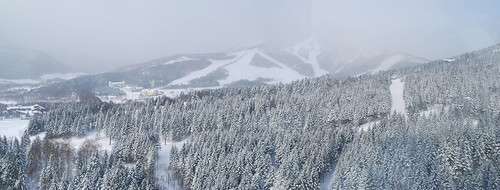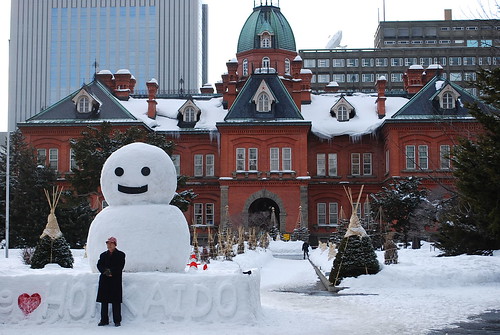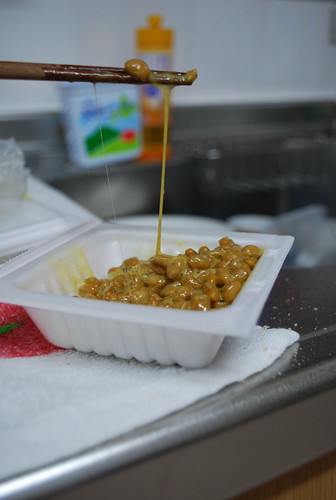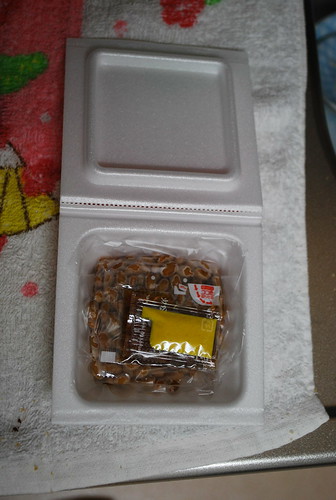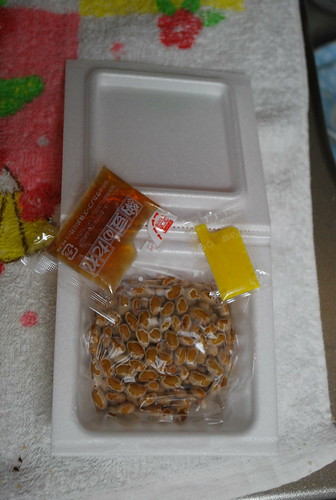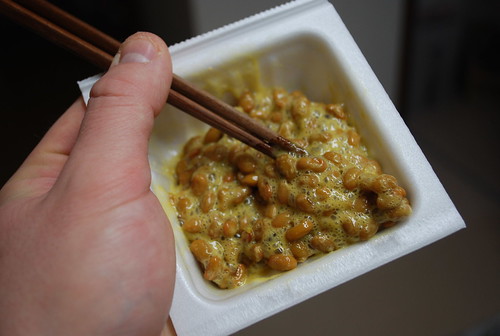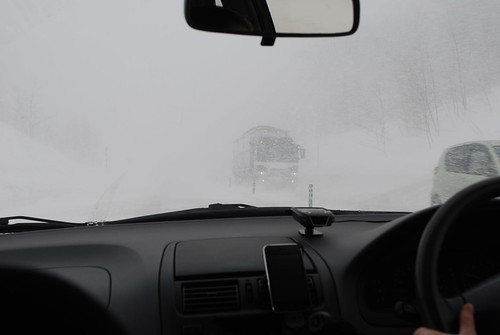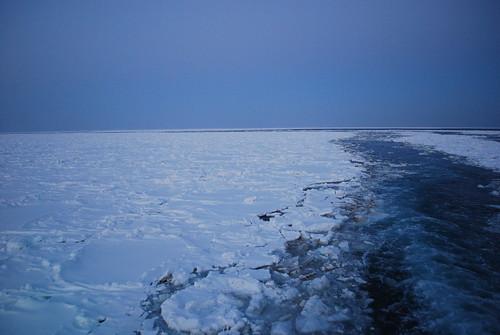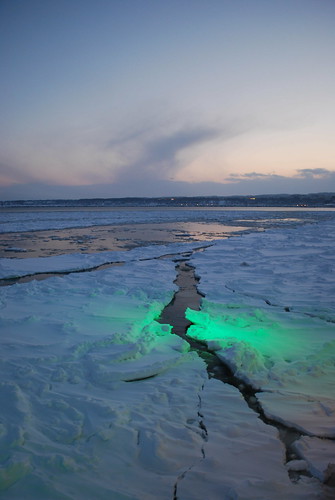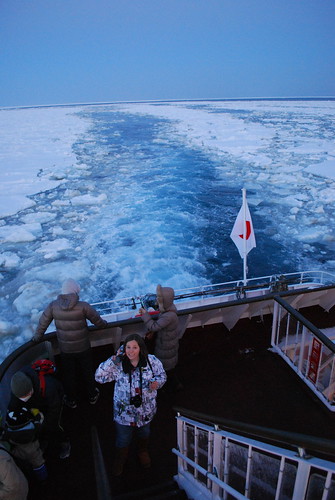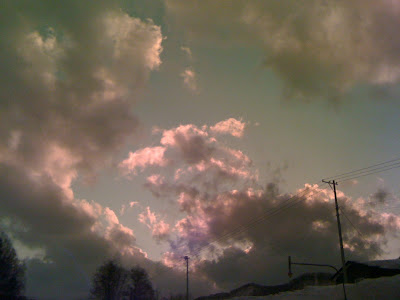Sunday, February 20, 2011
Alpha Tomamu and Anniversaries
Wednesday, February 16, 2011
This is Otaru
The city of Otaru is only an hour bus ride away from my town of Furubira, and in February they host a week-long snow lantern festival. Here are some no-bullshit photos of it.
Tuesday, February 15, 2011
This is Niseko
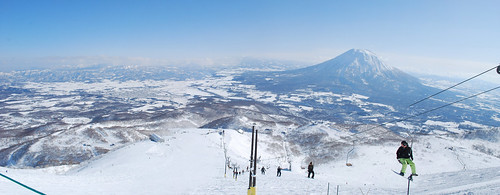 I tend to take a lot of pictures and sandwich them into blog posts. I thought the pictures might benefit from a little less distraction and a little more in the way of concrete context.
I tend to take a lot of pictures and sandwich them into blog posts. I thought the pictures might benefit from a little less distraction and a little more in the way of concrete context.Monday, February 14, 2011
Ai Ryori II
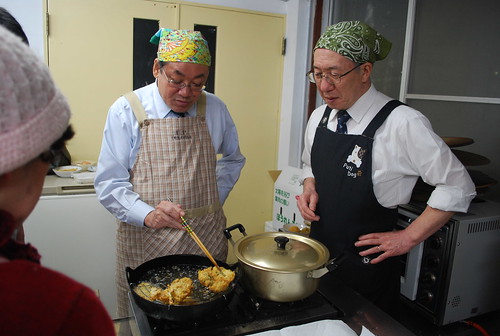
My new supervisor (left) cooking with my old supervisor (right)
Another Valentine's Day, another RABURABU Man's cooking class with the Furubira townies. Last year we made Gomaae, one of my favourites, and this year we made Bibimbap, which isn't, strictly-speaking, Japanese, but it is FREAKING DELICIOUS, so I didn't mind.
Sunday, February 13, 2011
2011 HAJET Sapporo-Niseko 雪祭り Tour
Friday, February 11, 2011
Wild Things in The Woods

Nightboarding over at Hirafu, after we'd finished giving our Snow Festival/Yuki Matsuri Tour snowboard lessons, Mark--in his fox suit--takes us down through the trees just between runs.
We must seem some wondrous wild things in the woods to the casual observer: galumphing down through the powder in our furry suits. Fox and Pikachu, Gizmo and Marimokori with the occasional flashes of metal and fiberglass at our feet. We must look like animist spirits scared to leave the safety of the trees as we only ever break from them briefly before barreling back into them.
Down through mist and snow.
Down the paths only Wild Things know.
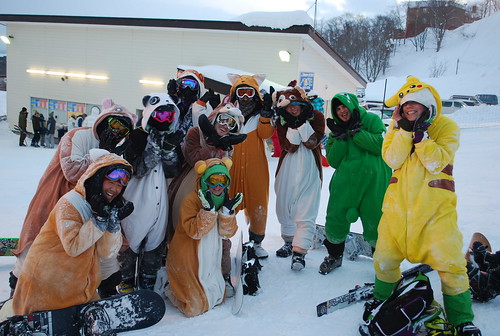
Monday, February 07, 2011
なっとう
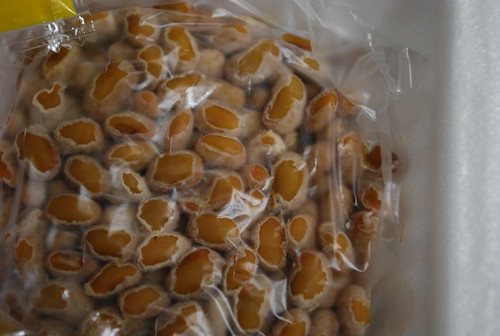
Natto.
A solid cornerstone of any foreigner's Japanese experience.
It is also the Japanese kryptonite to invincible Gaijin everywhere. All of their blonde-haired, blue-eyed, booming-voiced sexy might reduced to nothing in the face of four words:
“Can you eat natto?”
Posed by a Japanese national who you’d previously considered your friend; posed with a vague smile on his face and a mischievous twinkle in his eye.
While you, the uninformed foreigner, still try to hang on to your exotic power, ignorant to what’s about to be sprung on you.
Fermented soy beans.
Sickly beige and chilled into a solid mass.
The Japanese’ll serve it to you with hot sauce or mustard or soy sauce or kimchi.
If you’re truly unlucky, they’ll serve it to you with raw egg.
The pungent odor of gym socks will waft over you, and you’ll have to hold back the urge to gag. You’ll gird your loins and tell yourself that there’s no way that anything could actually taste that bad.
And you’ll be right. The danger of natto is not in the taste. The danger of natto is in the smell and the look of it; the slip-slimy consistency of the mucous-like liquid that holds it all together and trails out streamers like feathery silly putty as you stretch your first mouthful away from the mass of it.
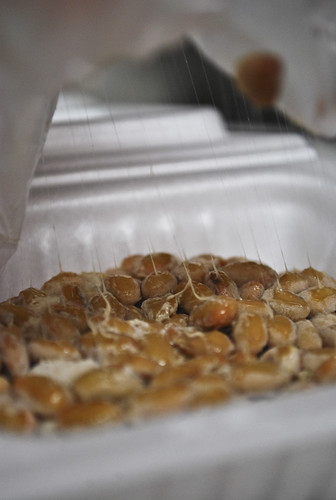
And that is only if you can get the slide-y natto to stay on your hashi, which is as much of a challenge as overcoming the smell of it. Woe betide those who had the misfortune of being served natto mixed with raw egg and the consistencies of the two seem to synergize when combined, creating something so much slimier than the sum of its parts: a slippery slurry that you can only ever hope to eat with hashi if you combine it with rice to lend it a bit more substance.
But if you’re lucky to be eating it straight, or with some of the stink of it masked with mustard or hot sauce, as you celebrate your victory over consistency and triumphantly bring the tenuous hashi-full of it to your mouth, you feel streamers of slime settle sickly across your chin. Looking down, you realize that they’re not only resting wetly on your chin but are running like long life lines back down into the styrofoam package of natto on the table before you.
ネーバ ネーバ
neba-neba. The unique Japanese expression for describing the slime-y, wet-web-like consistency of natto and one of my favourite random Japanese terms.
Those same slime-y strands are also now linking your hashi in your outstretched hand back to your mouth, and out of necessity you learn the action that all Japanese practice from birth: the fervent tornado spinning of your hashi hand through the natto strands to wind them up and free your face and your hand from the hair-thin umbilicals hanging down from them.
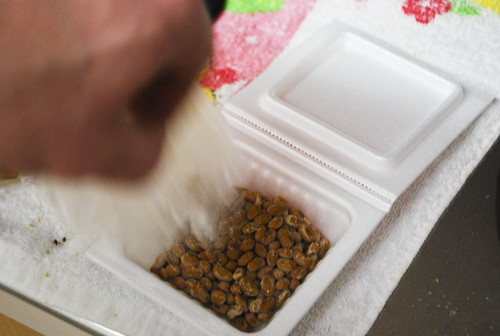
neba-neba.
Whatever you do when eating natto, it should never be eaten with anything else. The slime that comes off the fermented beans in natto is an parasitic, virulent thing that may just possess the vaguest inklings of sentience. Should you introduce natto-slime-covered hashi to any other sauce or liquid, the slime will spawn and multiply, and perfectly fluid sauces will quickly begin to manifest the same viscous, mucous trailers that natto has. And each further food you introduce this contaminated sample to will take them on, too. No matter how far the slime moves from its parent beans, it never seems to dissipate—seeming instead to only grow more powerful by the introduction of fresh liquid.
In the end, I’m convinced that eating natto comes down to a determination to succeed in a war of wills rather than a gastronomical motivation towards deliciousness. The only foreigners who eat natto are those with something to prove: the ones who, when that gleam comes into a Japanese friend’s eyes, and a sly grin creeps across his face, relish the ensuing crestfallen slump when they are able to proclaim “はい!なとがだいすきです!”
And then there’s folks like me, who got told once that natto was good for you, and in a draconian adherence to hearsay and folk wisdom that might just border on the alchemical, have decided to eat the stuff for breakfast every day.
But not with raw egg.
That would be just weird.
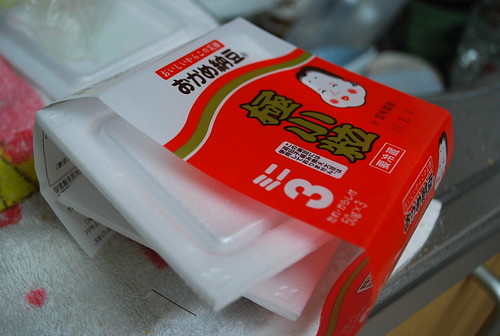
Sunday, February 06, 2011
Abashiri Ice: The Second Coming
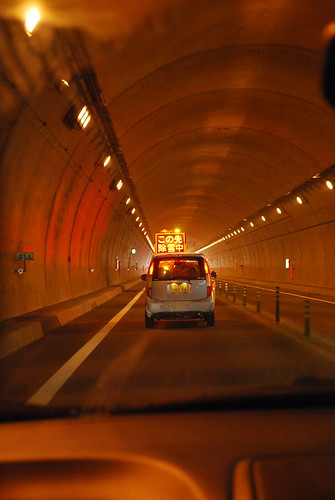
The first weekend in February, we took another road trip out to Abashiri since the drift ice situation had been so damn disappointing last year (I covered it in detail last year, likely out of frustration from not seeing it).
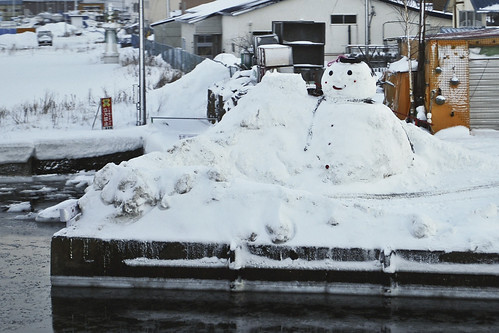
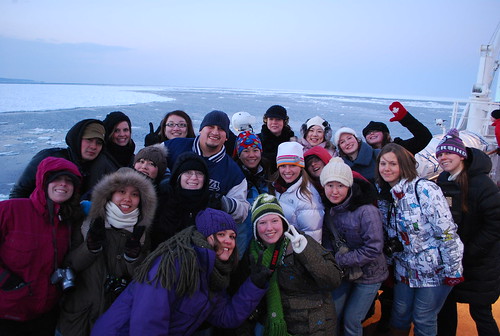
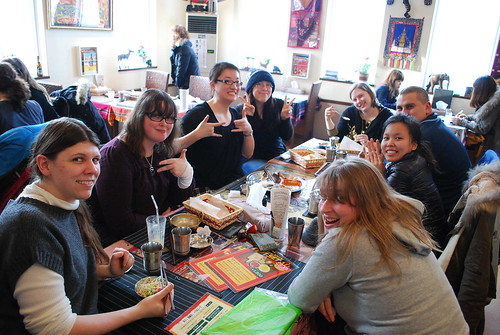
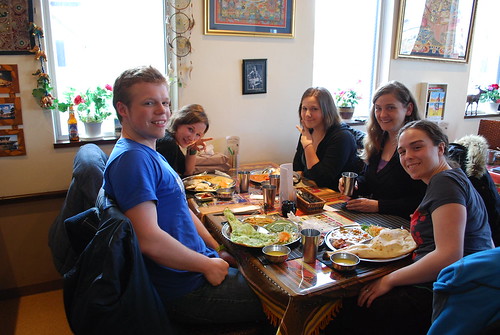
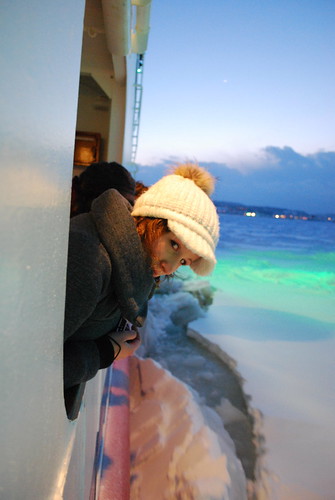
Friday, February 04, 2011
This is Where I Live
Thursday, February 03, 2011
If, on an icy night, a boarder
I've been fortunate out here in Japan to have some really awesome ALTs really close to where I live. Though I don't spend that much time with my closest ALT over in Yoichi, the next one down the road in Niki has come to be a good bud of mine. Perry often accompanies us on our mad adventures around the island. He's a very laid back dude from Edmonton who arrived in Japan at the same time as our JET group back in the summer of 2009, and he always seems to be game for pretty much anything...particularly when it involves snowboarding.
As Perry's fruit-growing town of Niki (know for its apples, mostly, but also its cherries) is only about an hour, at most, by bus from Furubira, I jumped on an invitation from Perry last week to come in for some night snowboarding at the tiny Niki skijo. In Hokkaido, pretty much any town with a hill near it has its very own ski hill. However, in cases like Furubira's, or neighbouring Bikuni's, many of the ski hills in the smaller towns no longer operate due to a lack of steady enough business to keep the lifts running. Fortunately Niki has managed to keep its skijo open while the rest of us have been shutting ours down.
Niki hasn't got much in the way of lifts (only a single, one-person chair), but the hill is planned out in such a way as to make maximum use of that one dinky lift. As a mid-winter warm spell had hit these parts on Wednesday and had driven the temperatures above freezing for the first time in what seems like months, all of the snow heaped about had started melting. This meant that, by the time Perry and I reached the hill on Thursday evening, the temperatures had dropped back down below zero and the surface conditions were pretty damn icy.
Fortunately, I managed not to fall flat on my ass where it counted, despite the runs at Niki being my first on my new Ride Revolt bindings (which I had to buy to replace the 10-11 year-old Burton bindings that had come with my 8000円 Charger board). I imagine that would have been significantly less fun than all of the hurtling down the hill we did on the slick surface. We were able to find a few pockets of powder...ish, but the warm temperatures had caused it all to go heavy, making turning in it a herculean task.
It was a really good night of boarding, even if the conditions weren't perfect. We were able to get in about three solid hours (which felt a lot longer), and it was enough to convince me to head back to Niki when the conditions are a little better.

